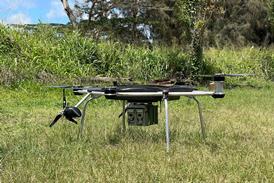The US National Transportation Safety Board has ruled that faulty airmanship was the primary cause of a fatal crash of a Cessna Citation 560 business jet, owned by US electricals store chain Circuit City, on approach to the Pueblo Memorial airport in Colorado on 16 February 2005.
Contributing to the accident however was the US Federal Aviation Administration’s “failure to establish adequate certification requirements for flight into icing conditions which led to the inadequate stall warning margin provided by the aircraft’s stall warning system,” the board said during the 23 January hearing.
Killed along with the pilots were six Circuit City employees and contractors en route from Richmond, Virginia to Santa Ana, California. The pilots were employed by charter operator, Martinair. The aircraft was stopping in Colorado for fuel.
NTSB investigators found that the crew in the presence of numerous distractions, including icing, a switch in expected runways and ill-timed missed approach procedure discussions, failed to monitor the aircraft’s speed. As a result, the captain allowed the airspeed to steadily decrease to well below target approach speeds for flight in icing conditions.
In addition, both pilots failed to heed aircraft operating manual and company guidance to activate the wing leading edge pneumatic deicing “boot” system when the aircraft is in landing configuration and ice is detected on the wings. The combination of the two caused the aircraft to slow below flying speed, stall and crash.
The board’s safety recommendations include:
- Modify Cessna 560 operational training to emphasise the need to increase speed and use deicing boots during approaches when ice is present on the wings.
- Require training programmes to teach and emphasise aircraft performance monitoring skills and workload management.
- Require manufacturers and operators of pneumatic deice boot-equipped aircraft to revise documentation to alert pilots that the boots should be activated as soon as the aircraft enters icing conditions. Historically, pilots have waited until 62mm-125mm (0.25-0.5in) of ice was present before activating the boots due to concerns over “ice bridging.”
- After the FAA’s revised icing certification standards for new aircraft are published (expected to be this summer), review the icing certification of currently certificated aircraft and perform additional testing if needed.
- Incorporate an automatic cycling mode for pneumatic deice-equipped aircraft certified to fly into known icing conditions. The pilots of the accident aircraft had to manual operate the system.
- Modify the Cessna 560’s stall warning system to provide warning in a wider range of icing conditions.
Source: FlightGlobal.com
















